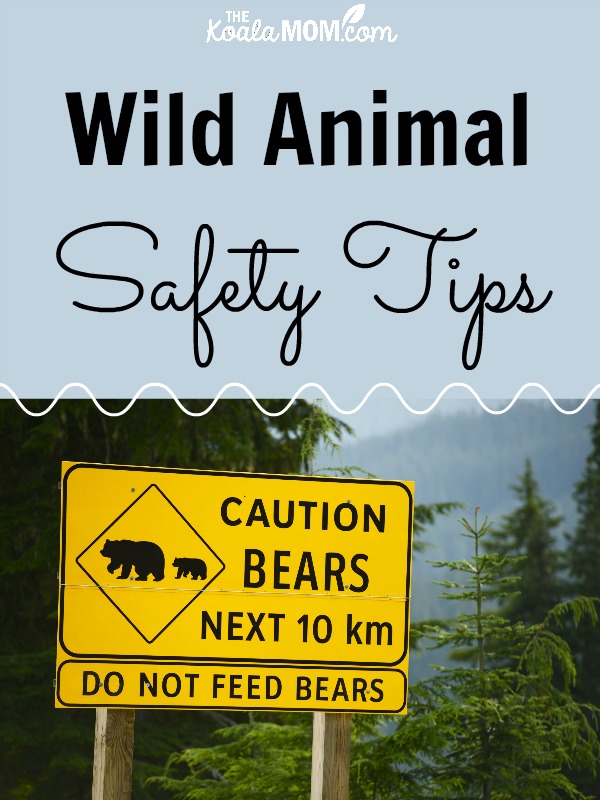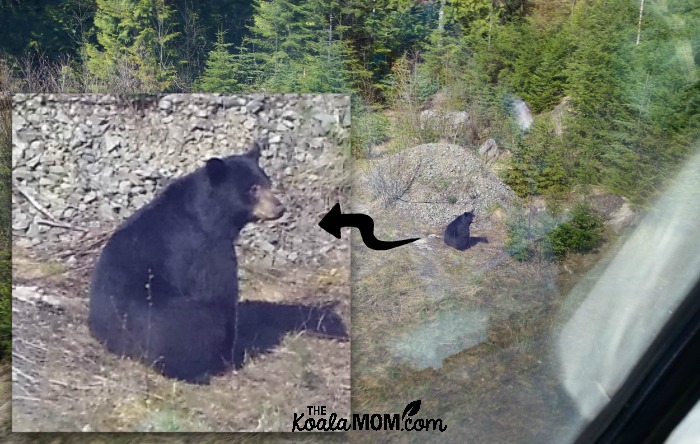As summer approaches, many of us flock to campgrounds across the country, looking to experience the great outdoors with our families. One of the highlights of a camping trip is seeing wild animals, but we may not always consider the safety concerns involved in such sightings. A little bit of preparation can keep everyone safe on the family camping trip. Here are some wild animal safety tips to help you prepare for your summer adventures.

I grew up camping and following trails in Jasper National Park. My parents were pretty strict about not approaching or feeding the animals we saw. We never stopped on the side of the road to view the elk or deer nibbling there. We didn’t even feed the chipmunks that ran up to us on the trail. Now, it drives me nuts to see people approaching animals to feed or take pictures of them; I want to shout, “You’re going to get hurt!” because every year, someone does.
Encounters with Wild Animals
Wild animals are usually wary of human beings and will try to avoid encounters with them (and that’s a good thing). However, in places such as campgrounds and national parks, where there are lots of people in the same areas that animals like to hang out, animals get used to human presence. This is when the trouble starts.
Remember that any wild animal, even a white-tailed deer, can be dangerous. Give them their space. Move slowly around or away from them. Parks Canada advises, “Resist that impulse to get close, reach out, or call out to wildlife.” We like pointing out wildlife to our girls, but we are very strict with them that wild animals are wild and they are not to approach or feed any animals.
Take pictures, but use a zoom lens or enlarge the picture later—don’t try to get closer to the animal to get a better picture. If you plan to do a lot of wildlife viewing, bring a pair of good binocular or a telescope. Focus on the experience rather than capturing it for later, though you might be surprised at how much your camera can capture. For example, here’s a picture of a bear I took from the train:

It’s also a good idea to stay in groups or pairs, even around the campground. A trip to the outhouse or the water fountain could end in a surprise if you run into other visitors there. Always send an adult with a child or send older kids together.
Wild Animal Safety Tips in Your Campground
Keeping campgrounds clean isn’t just about making it look good. A clean campground is also safer, both for your family and for the animals.
Never feed any animals, including birds or squirrels. Robin Tawney Nichols, author of Hiking with Kids (Morris Book Publishing, 2007), says, “They get all the nourishment they need naturally.” Human food to them is like junk food—very unhealthy. Nichols adds, “When wild animals become dependent on human food, they become aggressive towards humans. A marmot or a tiny chipmunk begging to share your lunch might just mistake your finger for a carrot.”
Food should be stored in sealed bags or in a cooler. Place the cooler and any other food stuffs, including utensils, in the vehicle or in the food storage bins provided in the campground. Parks Canada warns visitors that coolers are not bear proof; do not leave them sitting around your campground. Try to eliminate any smells that might attract animals: wash dishes, avoid spills, pick up garbage.
Brian Patton and Bart Robinson, authors of The Canadian Rockies Trail Guide (Summerthought Ltd, 2000), advise campers to “avoid cooking in your tent (food smells linger). Cook away from your campsite, wash cooking utensils immediately and dispose of dishwater well away from your campsite.” Campgrounds may have cook shelters with sinks or drains for dishwater; otherwise, throw the dishwater down the toilet or outhouse.
Park Offices and Campground Information
Make use of local resources, such as any information that the campground may provide about local animals and campground etiquette. Observe the notices posted on any bulletin boards, which often warn about local animal sightings. If you are camping within a national park, check out the park office for brochures or to talk to the warden.
Following these wild animal safety tips and being aware of the wildlife around you can help make your summer camping trip safe and enjoyable.
Do you enjoy camping or hiking in the summer with your family? What wild animals have you seen?

8 Comments
Such an important post to share with all parents. We were on a camping trip this past weekend and we encountered several very brazen raccoons! One even came up and licked my cousin’s wife’s foot while we were roasting marshmallows at the campfire!!
Raccoons scare me! We didn’t have them in Alberta so I didn’t encounter them until moving to Vancouver Island. They can be vicious, I’ve heard. We had some around our house and I’ve always given them a very wide berth!
Great tips!
The oddest wild animal we encountered was a wild horse while camping in Alberta. He was there every morning. Best campsite visitor ever.
That is very odd! Reminds me of the moose we saw every morning in the lake on one camping trip. 🙂 As long as he was a good visitor… and not too messy. 🙂
I grew up around bears, so I knew that feeding them was always a huge no. Same with goats, elk, deer, etc so whenever I drive through Jasper and I see the tourists trying to feed them – I give my head a shake.
Don’t feed the wild animals people! lol
There are signs all over and people still do it. Despite all the news reports too, about people getting chased by bears or attacked by elk. Sigh. Safety first, people! 🙂
These are very important wild animal safety tips! When I was a child, I approached a beaver only to have it growl at me. Glad it was just a growl, instead of something worse.
Yipes! I didn’t know beavers could growl. 🙂 I suppose any animal can be dangerous when it’s cornered and scared. We need to remember that we’re bigger than they are so we look scary to them (as I’m always telling my girls, even when they are trying to pet a small dog or cat that’s looking scared). Thanks for dropping by!